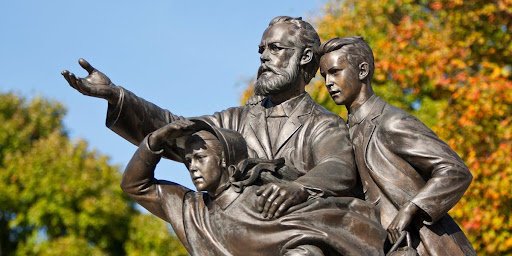This Coming Year…
by Michael W. Campbell, Ph.D.
This coming year is a great opportunity to celebrate the mission of the church. The denomination has chosen “Mission 150” with a whole series of events, as well as a podcast hosted by Sam Neves and David Trim, that helps to better tell the story of Adventist mission. On September 15, 1874, J. N. Andrews, along with his two children, Mary and Charles, went as the denomination’s first official missionaries.
Of course, Adventist historians know there were many steps leading up to that point, including several others who went as missionaries before Andrews and his family left. Notably M. B. Czechowski, a Polish priest, who converted while living in America, returned to Europe with a burden to share his faith. No one would sponsor him, including our early church pioneers, so he had to be sponsored by the Advent Christian Church (he made sure not to mention his belief in the seventh-day Sabbath). Our church wasn’t ready yet to send its first official missionaries, and a precedent was established prevalent among many other religious groups of sharing literature and self-supporting missionaries as entering wedges.
But by 1874 the time was now ripe.
Yet the story is more complicated than what is usually told. In front of the Pioneer Memorial Church is a famous statue depicting the three who left. But there was one more person who should be featured in that beautiful artistic rendition of this turning point in our Adventist past.
Ademar Vuilleumier was the fourth person who should be in that sculpture. Why?
His family was among some of the earliest converts in Tramelan, Switzerland, thanks to Czechowski, who when he left, also left behind some early Seventh-day Adventist literature. This helped them establish contact. And their family sacrificially sent young Ademar to Battle Creek, Michigan. It was reported by Goodloe Harper Bell, who was in the process of establishing a school, that Ademar arrived only knowing the name “James White.” So the first Adventist school, from the start, also incorporated an “ESL” (English as a Second Language) program. This helped to establish a relationship so that when Andrews left, it was to meet with believers in Tramelan, as Ademar served as their translator and guide.
This brings up two important points that should be remembered in conjunction with the history of Adventist missions:
Adventist mission has always been a reciprocal process, and missions have never been unidirectional. In this instance, early literature and self-supporting works established contact that resulted in multidirectional relationships as people shared their faith in very practical ways. It was complicated and there were many intermediary steps.
This year also marks the anniversary of the formal organization of Adventist education which, just like mission, can be traced to many earlier intermediary steps and was formally established when Battle Creek College, the denomination’s first permanent school, was officially opened in 1874. So as you think about the history of Adventist mission, I encourage pastors to think about opportunities to reflect and highlight the vital importance between Adventist education and mission.
So, what are some ways you can do this?
Some suggestions might include a special heritage Sabbath that features the history of Adventist education and mission. Perhaps you can feature a skit by young people, especially Pathfinders, who can feature aspects of the history of Adventist education and mission. Stories abound from Adventist history so look for opportunities to include some as sermon illustrations. There are innumerable ways that you can better tell the Adventist story, but do so in ways that are winsome and engaging…because everyone loves a good story.
And this isn’t just any story, it’s the story of our church. It’s our identity. This is our opportunity to remember why we exist and where we are going. Mission is what drives this church. And mission has always been rooted in Adventist education. The two are inseparable.
Micheal W. Campbell serves as Director, of Archives, Statistics, and Research for the North American Division of Seventh-day Adventists.

